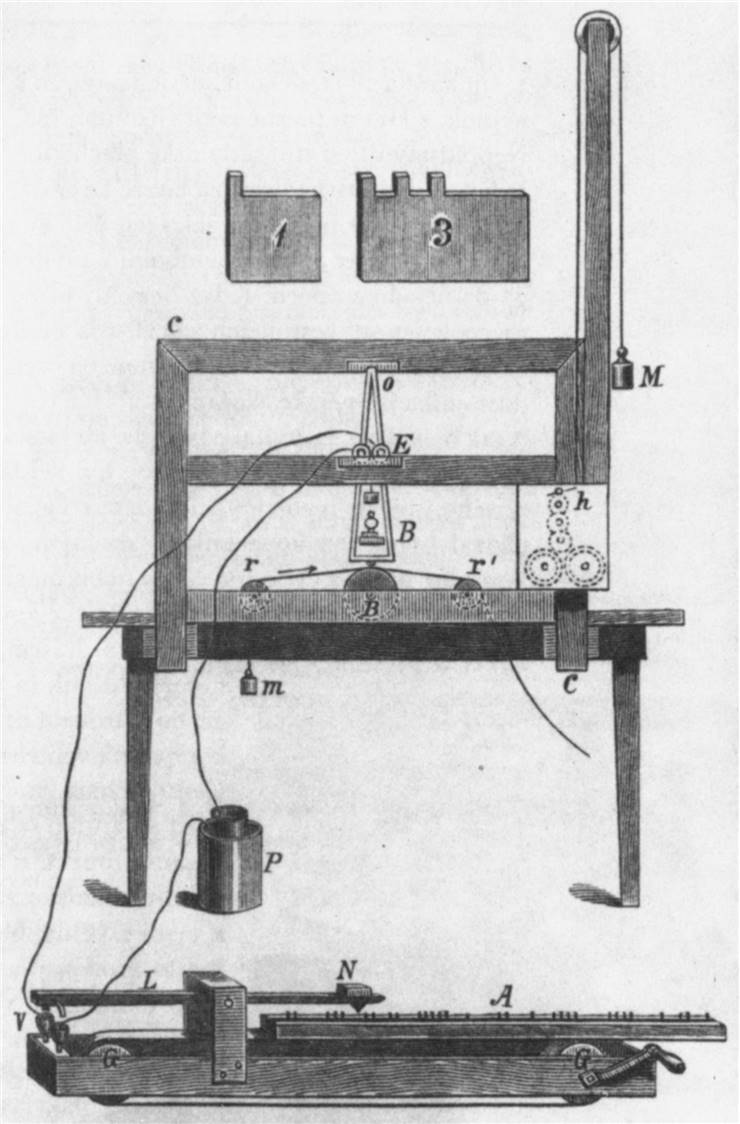History of Electrical Telegraph
Electrical Telegraph is a device that uses electrical signals to instantaneously send and receive messages over great distances via telecommunication lines or radio. The originator of this way of communication was electromagnetic telegraph from early years of the 19th century which enabled first transfer of coded messages between vast amounts of land. Electrical Telegraph (most commonly called just telegraph) was first introduced by several scientists from the United States and America, but most common name associated with it is Samuel Morse who won the patent rights to this device and was one of the contributors in the creation of Morse code. This new technology and Morse's coded language enabled the human race to start instantly communicating with one another across continents and oceans, creating great impact into our social and economical way of life.
The early days of telegraph started in the mid-1750s when scientist started exploring the properties of electricity. French scientist Jean-Antoine Nollet conducted an experiment by gathering around 200 monks in a circle. After discharging electricity into the wire that was connecting them all, he noted that electricity traveled instantaneously over a distance of one mile. This discovery sparked the imagination of scientist around the world, and several years later first documented proposal of the telegraph was found in the "Scots Magazine" when one anonymous writer suggested the creation of telegraph system that connected several telegraph with one wire for each letter of the alphabet. In 1800 famous Italian physicist Alessandro Volta created a first battery, an invention that would later become one of the integral parts of the modern telegraph. The year 1809 saw the creation of one interesting telegraph device by the hands of the German inventor Samuel Thomas von Sömmering. He improved the earlier designs of Francisco SalváiCampillo and created two terminal that were connected with 35 wires and could transfer information to the distance of few kilometers. His electrochemical design included a very interesting way of receiving messages - each of the wires (that carried signals for each of the German alphabets) was submerged into acid which released bubbles after receiving an electrical charge, and thus notifying the operator of the incoming message.

One of the first working designs of the modern telegraph was created in 1816 by English meteorologist and inventor Francis Ronalds, who created the 13-kilometer wire installation in his backyard (entire length of wire was encased in glass for insulation). In the following years several inventors contributed to the creation of the modern telegraph, some creating some vital part and some creating their whole versions of the telegraph - most notably William Sturgeon who invented electromagnet, Baron Schilling who made first electromagnetic telegraph in 1832, Carl Friedrich Gauss and Wilhelm Weber who in following year managed to communicate at the distance of over 1km, and Joseph Henry who in 1835 invented electrical relay which had critical role in the future telegraphs.
The two versions of the electric telegraph that become widely used in the world came from England and United States. In 1837 England, inventors Sir William Fothergill Cooke and Charles Wheatstone successfully patented telegraph and started implementing it two years later. Use of their telegraph remained in effect for a long time in England and many of their overseas colonies.
The most successful version of telegraph came from the minds of Samuel Morse (who developed designs for the device in 1836) and his assistant Alfred Vail (who helped Morse in creation of alphabet communication code). Their designs were officially adopted by US Government between 1843 and 1844, which marked the beginning of telegraph expansion across the entire world. By 1861 first transcontinental telegraph system connection was established between California and Western coast of USA, and five years later first transatlantic cable connected the USA and Great Britain. The global saturation of the telegraph continued to rise, especially after the 1892's patent of Thomas Edison who invented the method of two-way telegraph communication.
